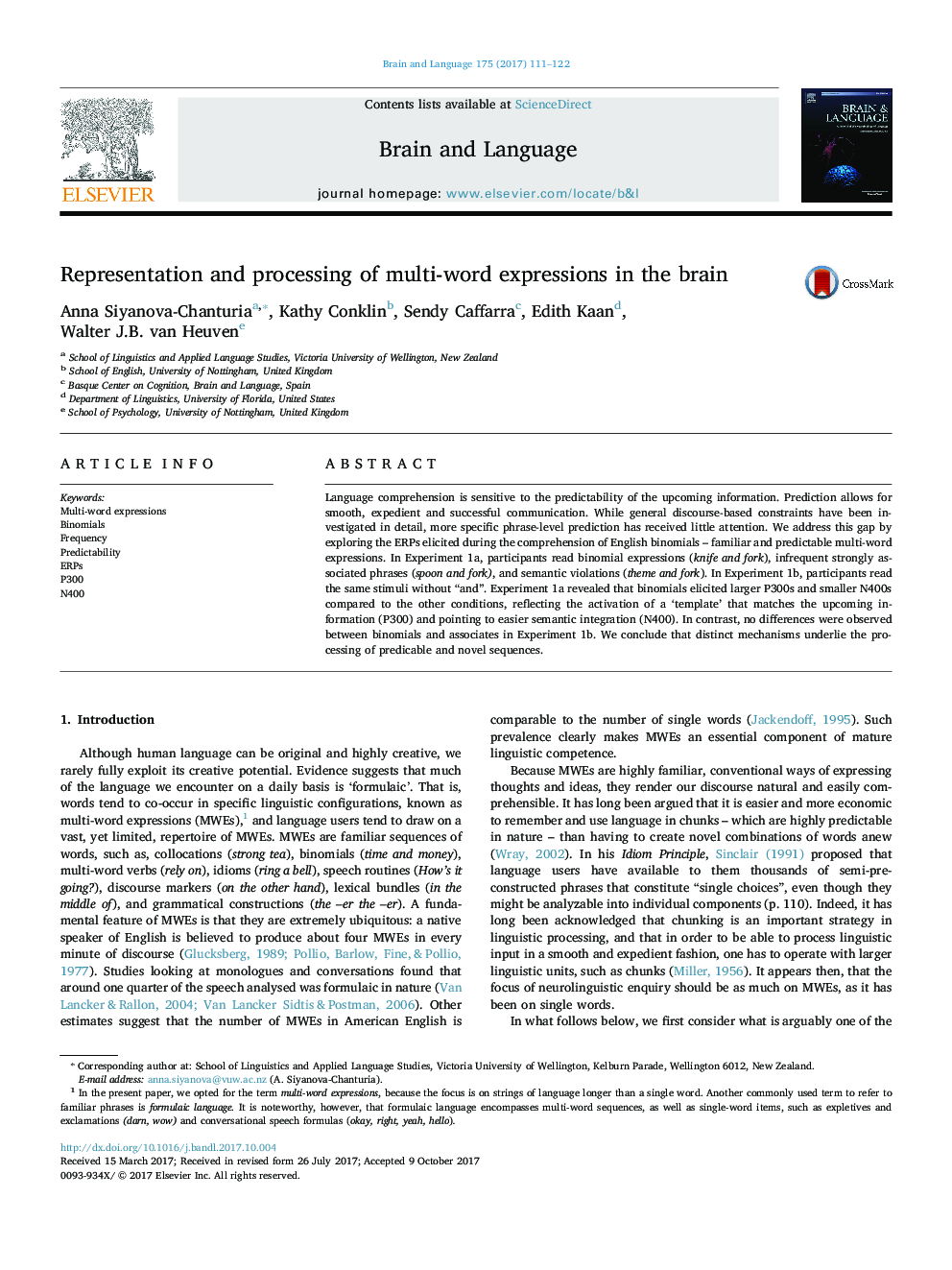| Article ID | Journal | Published Year | Pages | File Type |
|---|---|---|---|---|
| 7283706 | Brain and Language | 2017 | 12 Pages |
Abstract
Language comprehension is sensitive to the predictability of the upcoming information. Prediction allows for smooth, expedient and successful communication. While general discourse-based constraints have been investigated in detail, more specific phrase-level prediction has received little attention. We address this gap by exploring the ERPs elicited during the comprehension of English binomials - familiar and predictable multi-word expressions. In Experiment 1a, participants read binomial expressions (knife and fork), infrequent strongly associated phrases (spoon and fork), and semantic violations (theme and fork). In Experiment 1b, participants read the same stimuli without “and”. Experiment 1a revealed that binomials elicited larger P300s and smaller N400s compared to the other conditions, reflecting the activation of a 'template' that matches the upcoming information (P300) and pointing to easier semantic integration (N400). In contrast, no differences were observed between binomials and associates in Experiment 1b. We conclude that distinct mechanisms underlie the processing of predicable and novel sequences.
Keywords
Related Topics
Life Sciences
Neuroscience
Biological Psychiatry
Authors
Anna Siyanova-Chanturia, Kathy Conklin, Sendy Caffarra, Edith Kaan, Walter J.B. van Heuven,
